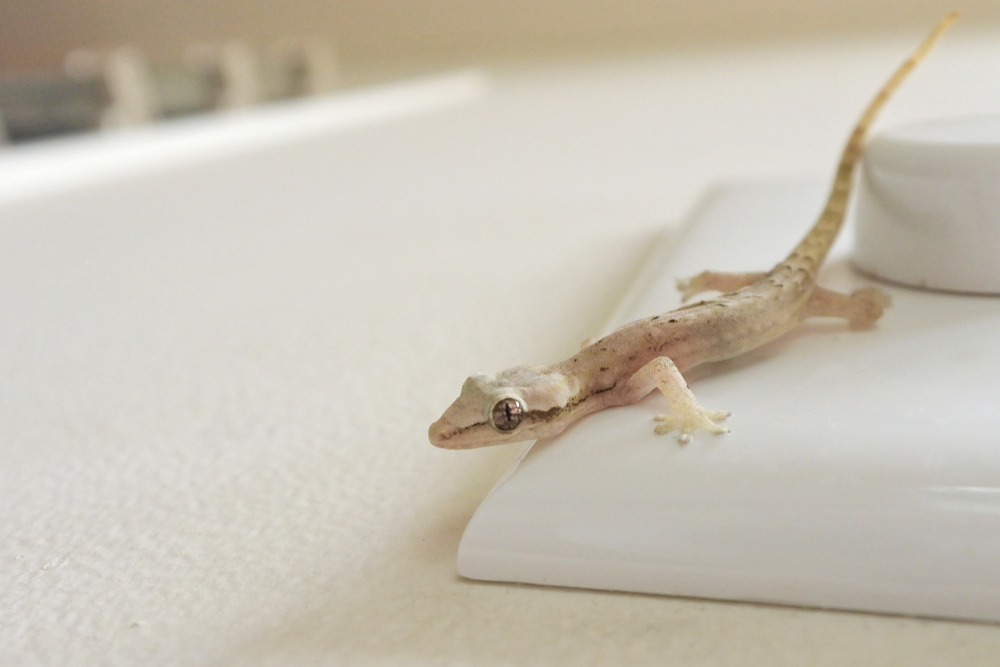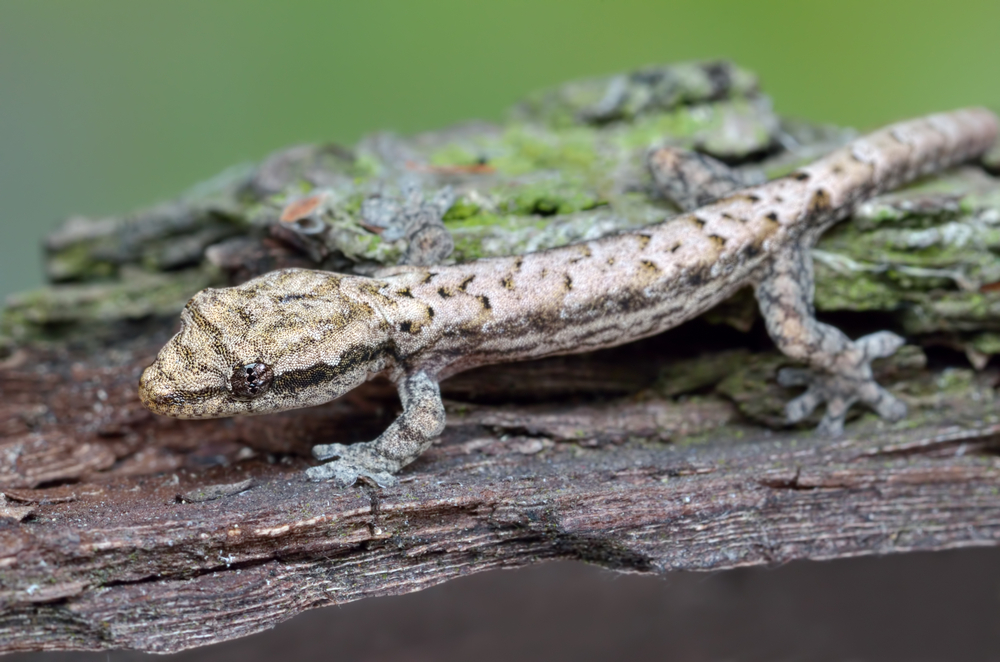Mourning geckos (Lepidodactylus lugubris) are small geckos, reaching 7 cm in body size. Although native to parts of Asia, these geckos have become invasive across tropical regions of Oceania and North and South America.

Mourning geckos unique breeding strategy
Their ability to successfully colonise new environments is largely attributed to their unique reproductive strategy. Mourning geckos are all female and reproduce via parthenogenesis, where miniature clones of the mother are produced. Once a small number of mourning geckos have been introduced their population numbers can increase rapidly. This has become more frequent with increased human travel.
Mourning geckos have frequently been observed in urban areas, living inside houses and buildings. The native diet of these geckos usually consists of small arthropods, fruit and nectar. However, the invasive urban mourning geckos have started adapting their diet to the environment.
The invasive urban diet of mourning geckos
Recent observations in Belém, Brazil, have shown urban mourning geckos venturing out into kitchens during the night to feed. The geckos typically fed on ripe fruits such as papaya and banana but were also observed feeding on fruit juice, eggshells, sugar, beans and even beer! In addition to their newly found urban food sources, the geckos also feed on nectar, reflecting their native diet.
These observations highlight the flexibility of the mourning gecko diet, an ability that has helped them spread and colonise multiple continents. The observations also show that nectar is likely a key component in the mourning gecko diet. This should be reflected in captivity and could also be true of related species. The role lizards play in plant pollination is not well documented. This is despite evidence that the Madagascan giant day gecko (Phelsuma grandis) and Duvaucel’s gecko (Hoplodactylus duvaucelii) are pollinators in their native ranges.
The full article can be found here.
The nectar feeding observation can be found here.
By Adam Colyer and Sanya Aggarwal
